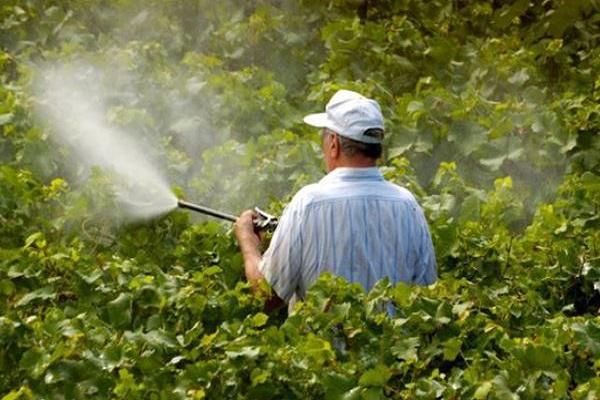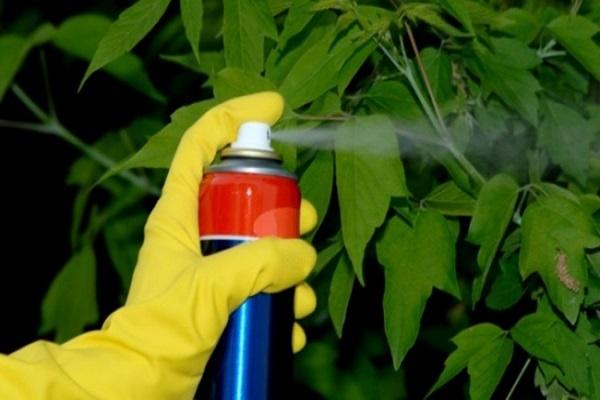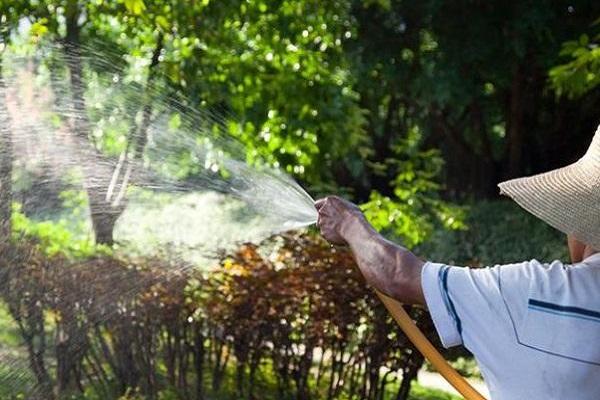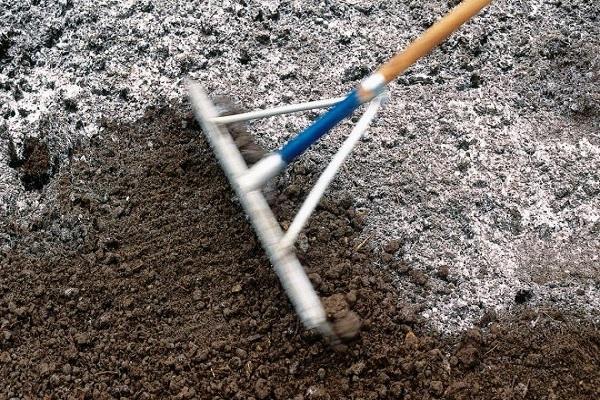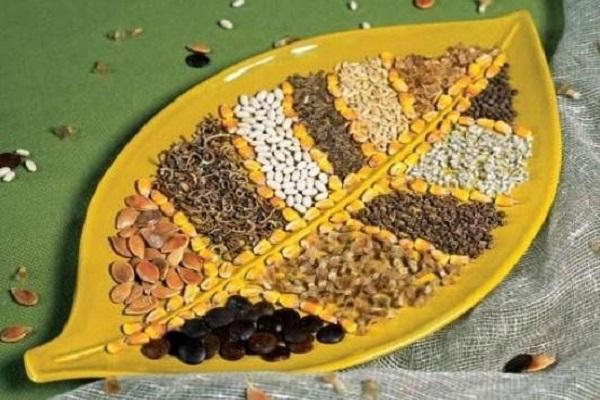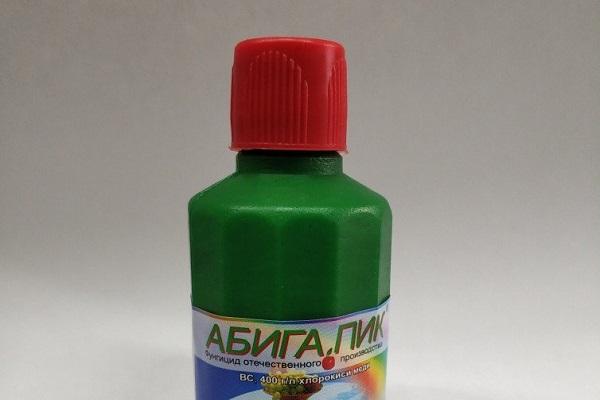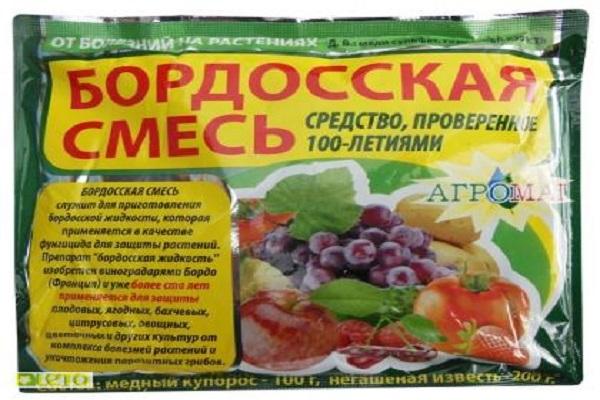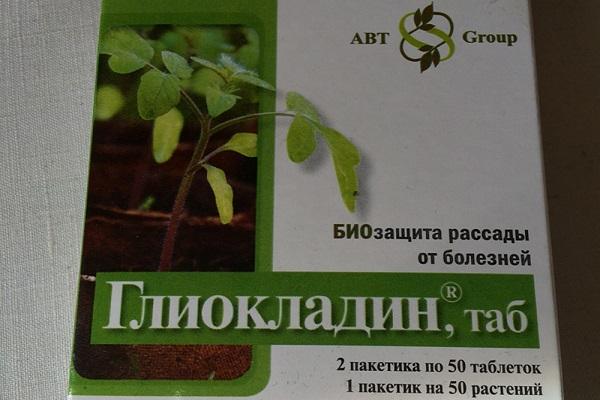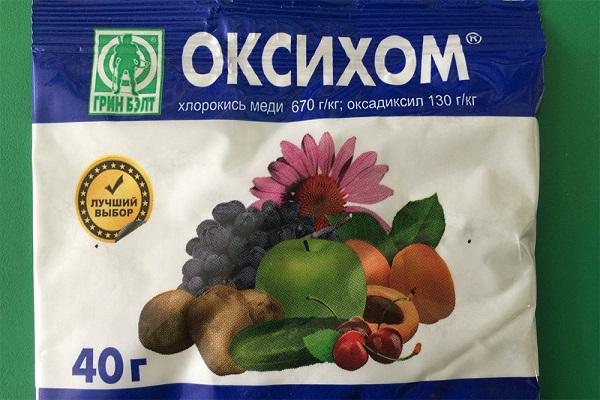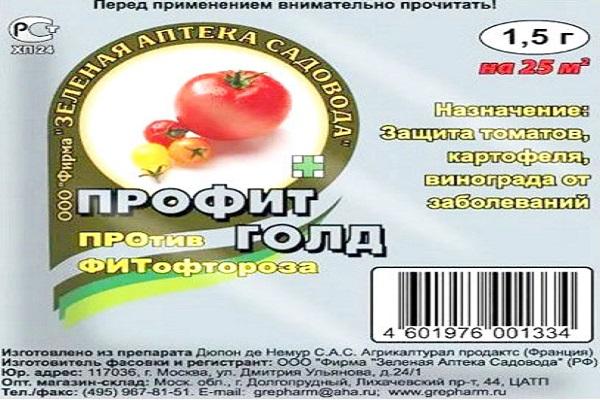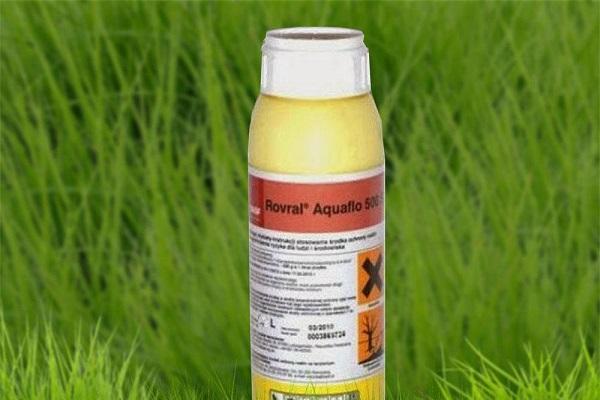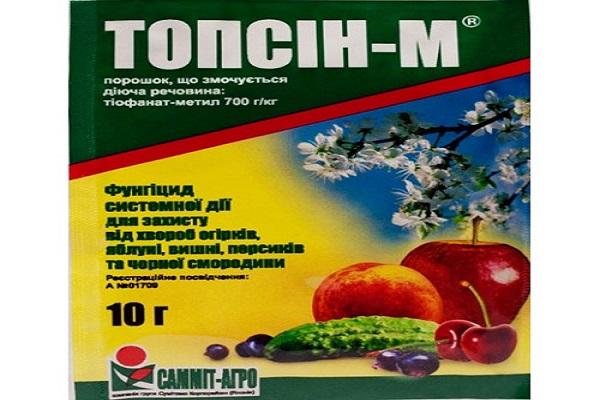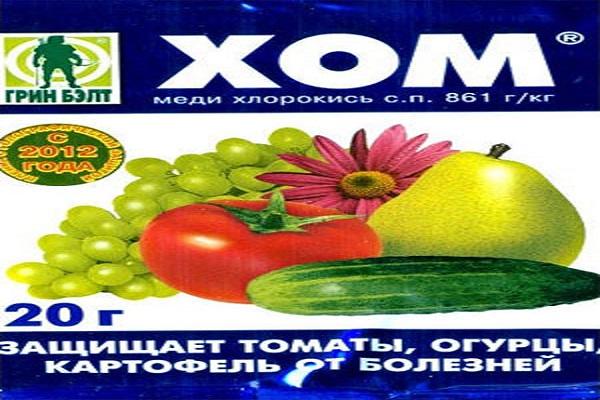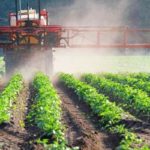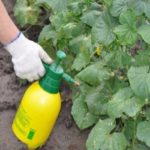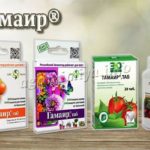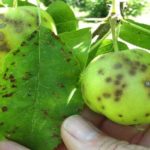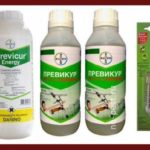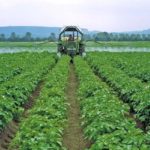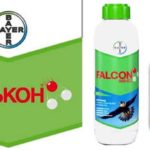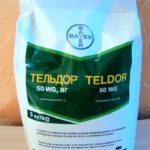When caring for plants in a garden in a suburban area, you need to practice an integrated approach. An important point of care is the use of protective fungicides for the garden. Special products protect green spaces and reduce the risk of infections.
- What are fungicides
- Advantages and disadvantages
- Validity
- Classification
- Depending on chemical properties
- Depending on the effect on the pathogen
- By purpose of use
- Depending on the nature of distribution within plant tissues
- Operating principle
- Chemical fungicides
- Biological drugs
- Instructions for use
- For soil
- For plants
- For seeds
- List of drugs
- "Consento"
- "Abiga Peak"
- "Acrobat MC"
- "Bayleton"
- Bordeaux mixture
- "Vitaros"
- "Gamair"
- "Glyokladin"
- Green soap
- "Kurzat"
- "Maksim"
- "Oxyhom"
- "Ordan"
- "Previkur"
- "Profit Gold"
- "Raek"
- "Ridomil Gold"
- "Rovral"
- "Skor"
- "Topsin-M"
- "Trichodermin"
- "Fitosporin-M"
- "Hom"
- "Horus"
- Safety precautions when working with fungicides
What are fungicides
A fungicide is a substance of biological or chemical origin used to suppress the formation of fungi. Fungi are the causative agents of many infections that affect vegetation. Without a protective substance, plants lose their immunity, wither and develop slowly.
Advantages and disadvantages
Fungicides used in the garden have a number of positive characteristics. The main advantages include the following:
- substances penetrate inside plants in a short period and have an active protective effect;
- due to their resistance to moisture, fungicides are not washed off with water even in heavy rain;
- after treatment, pathogens are eliminated in all tissues;
- influence on a wide range of fungal diseases.
In addition to the obvious advantages, the drugs have several disadvantages.
As a result of disinfection, a partial disruption of the favorable microflora occurs, which can affect the growth and development of green spaces. If fruit plants are processed, the harvested crop can be eaten only after some time.
Validity
The exact duration of the protective effect depends on the specific type of drug used. The average is 10-12 weeks, after which re-treatment is required. Since the vegetation does not develop resistance to the effects of drugs, there is no need to wait between sprayings.
Classification
Depending on a number of characteristics, fungicides can be divided into classes.
When choosing the appropriate option, you need to take into account the condition of the plants, the presence of fungal diseases and signs of their manifestation, as well as other factors.
Depending on chemical properties
According to this indicator, fungicides are classified into organic and inorganic. The former do not contain heavy metals, so they easily dissolve in liquid and can be used in combination with other substances. However, they are considered unstable compounds and remain in the ground for a short time.
The inorganic variety is copper-containing. It may also contain compounds of nickel, potassium, sulfur and other elements. They are compatible with fewer drugs and can accumulate in the ground and remain there for a long period.
Depending on the effect on the pathogen
Based on the method of influencing the pathogen, systemic and contact fungicides are distinguished. Systemic substances easily penetrate into plants, move through blood vessels and enter all parts, which provides reliable protection against possible infections. Some types of systemic drugs can be used for preventive purposes.
Contact fungicides interact with the pathogen only on the visible part of the plantings, without penetrating into the tissue. This allows you to destroy pathogens at the stage of their development and provide protection against gray mold, anthracnose and a number of other diseases.
To achieve the effect, you need to carefully treat the plants so that the solution gets to all parts.
By purpose of use
Medicines for fungal diseases are divided into several types, taking into account the purpose for which they are used. The following groups are distinguished:
- Seed protectants. Seed processing is important for a large number of crops. Disinfection using combined agents demonstrates the greatest effectiveness.
- Means for disinfection of greenhouse soil. They are used to protect annual crops grown by seedlings. Fungicides of this group also help get rid of late blight.
- Fungicides for spraying perennials during the dormant period. Spraying is carried out to destroy pathogens in wintering parts of plantings, as well as powdery mildew and rust.
- Preparations for spraying during the growing season. These drugs are actively used during the period of plant growth and development.
Depending on the nature of distribution within plant tissues
Based on the distribution of the substance within plant tissues, local and intraplant fungicides are distinguished. The former are active on the outside of the stems and leaves, while the latter penetrate deep into the tissues and have a complex effect.
Operating principle
The specificity of the action of protective drugs depends on their category. When purchasing fungicides, you must definitely find out the variety in order to properly treat the plantings in the future.
Chemical fungicides
The mechanism of action of chemical fungicides is varied and consists of many processes. After spraying plants, nuclear division in fungal cells is suppressed, metabolic products are formed that act as an antibiotic, and areas of necrosis are formed, which serve as a barrier to the entry of pathogens into uninfected tissues.Certain elements of chemicals interfere with the formation of nucleic acids and suppress energy metabolism.
Biological drugs
Substances of natural origin increase plant immunity and provoke the production of substances that prevent infection. When spraying plants infected with a pathogen, organic products release toxins to kill the pathogens.
Instructions for use
The process of using fungicides depends on the object being treated. To achieve the desired effect, you should read the instructions for use.
For soil
Powdered fungicides intended for soil are applied during digging. Using natural substances soluble in water, they spill over the surface of the soil to destroy pathogenic fungi.
For plants
Fungicides for flowers and trees can be used by spraying or dusting. As a rule, green spaces are treated with liquid copper-based substances. Broad-spectrum drugs are used several times during the season. As a rule, processing periods occur in early spring and late autumn.
For seeds
Seeds are treated immediately before sowing. It is most convenient to use soluble substances for processing seed material. After wrapping the seeds in gauze, they are placed in the solution and kept for the time indicated on the package.
List of drugs
When choosing suitable fungicides for use in the garden, it is recommended that you familiarize yourself with the list of the best options. Each of them has individual characteristics and features.
"Consento"
A combined fungicide used for the prevention and control of Alternaria, late blight and peronospora.It is allowed to use "Consento" at any stage of the growing season. The product is resistant to rain and provides protection regardless of weather conditions.
"Abiga Peak"
A contact action drug designed to eliminate a complex of bacterial and fungal diseases. "Abiga-Peak" evenly covers the above-ground part of plants and remains on the surface for a long time.
One of the important advantages is activity at low ambient temperatures.
"Acrobat MC"
The systemic action component of "Acrobat MC" dimethomorph destroys the mycelium formed in the plant within 2-3 days after infection. The use of the drug provides protection for the plant in case of a disease that has begun but is not visually manifested.
"Bayleton"
Systemic fungicide used to treat grains, vegetables, corn and other crops. The biological effect of the treatment lasts for 2-4 weeks.
Bordeaux mixture
Bordeaux mixture is an aqueous solution of copper sulfate and slaked lime. The substance destroys fungi and suppresses the activity of pathogenic microorganisms. To treat vegetation, a mixture with a concentration of 1% is used.
"Vitaros"
The combined disinfectant "Vitaros" fights a complex of infections spreading through seed and soil. "Vitaros" suppresses the development of pathogens on the outer surface of planting material and inside it. The presence of a dye in the composition simplifies control of the processing procedure.
"Gamair"
The drug "Gamair" is applied to the soil or sprayed on the leaves, disrupting the activity of infectious agents. "Gamair" protects plants from root rot, powdery mildew, Alternaria blight and a number of other diseases.When used in combination with pesticides, the substance reduces pesticide stress in plants.
"Glyokladin"
The product protects plant roots and soil from anthracnose and other infections. Biological soil preparation prevents the occurrence of root and basal rot.
Green soap
Green soap with a thick base contains potassium salts of fatty acids, natural vegetable oils and fats. The substance is suitable for use for preventive purposes, combating diseases and pests at the initial stage of their occurrence.
"Kurzat"
An economical fungicide with a complex effect protects plants from late blight and peronospora. The composition contains two active components - cymoxanil and copper oxychloride. Thanks to the penetration of the substance through the leaves, disease control occurs on the reverse side.
"Maksim"
The disinfectant "Maxim" is intended for fruits, grains and other crops. This fungicide can be used in advance on seed. Due to the signal dye, it is possible to check the quality of processing.
"Oxyhom"
The two-component fungicide "Oxychom" belongs to the contact-system category. The substance prevents the development of late blight and peronosporosis, and also fights their consequences. The main advantages of Oxychom are a quick reaction and a long period of protection.
"Ordan"
The local-systemic action drug was created to eliminate diseases caused by downy mildew fungi. The two-component solution can be combined with pest control agents for comprehensive protection of green spaces.
"Previkur"
"Previkur" is used to control the content of phytopathogens in the soil, to effectively treat root and surface diseases caused by oomycetes.Previkur is used by spraying or watering.
"Profit Gold"
To combat late blight, mildew and Alternaria, the “Profit Gold” solution is suitable. The product is suitable for use in wet weather and does not wash off during frequent rains. After treating plants, Profit Gold inhibits the spread of diseases and treats hidden stem infections.
"Raek"
Spraying plants with the highly active substance “Raek” promotes rapid penetration into tissues. "Raek" protects fruits and leaves, stopping the sporulation of pathogens and reducing the risk of secondary infection. The main advantages of the drug are long-lasting action and low consumption.
"Ridomil Gold"
Using Ridomil Gold is useful for healthy plantings in order to reduce the risk of developing diseases. The substance inhibits the formation of infections during the period of active growth and provides comprehensive protection, including untreated plant parts.
"Rovral"
“Rovral” can be useful for any plantings, since it has a preventive and therapeutic effect, preventing the development of many pathogens. This drug is suitable for use as part of an anti-resistance program.
"Skor"
"Skor" is a systemic and contact fungicide with the active ingredient difenoconazole. The purpose of the substance is to prevent and treat a complex of diseases of flowers and other plant species. “Skor” is also suitable for protecting seed.
"Topsin-M"
"Topsin-M" is a remedy for combating infections of grain and fruit crops. The prevalence of the substance is due to a number of positive characteristics, including the following:
- simultaneous fight against several diseases;
- long period of protection (up to 4 weeks);
- possibility of combination with acaricides and insecticides;
- lack of toxic effects on treated plants;
- safety of use.
"Trichodermin"
The biological product “Trichodermin” can be used not only to protect green spaces, but also as a fertilizer. “Trichodermin” suppresses the activity of harmful bacteria and absorbs plant debris accumulating in the soil.
"Fitosporin-M"
A special feature of Fitosporin-M is its flow through the vessels of plants. The protective reaction begins immediately after treatment and lasts for several weeks. Fitosporin-M contains live spores that destroy dangerous microorganisms.
"Hom"
Fungicide "Hom" is based on copper and is available in powder form. "Hom" is suitable for disinfecting vegetable and ornamental crops. The main active component is copper oxychloride, which prevents the development of scab, late blight, curl, downy mildew, rust and other diseases. The substance also destroys pathogens of fungal infections. Despite its powerful effects, Hom is safe for humans if the basic rules of use are followed.
"Horus"
The “Horus” product is used at the stage of ripening of pome and stone fruit crops. "Horus" protects plants at any ambient temperature and is not washed off by rain. The standard consumption of the product is several times less compared to a number of other contact preparations.
Safety precautions when working with fungicides
In order not to disrupt the growth and development of plantings, it is important to correctly use protective drugs and follow safety measures. When working with disinfectants, it is recommended to wear gloves so that the substance does not get on your hands.For vegetables, grains and other crops, you need to purchase specialized types of preparations that contain copper, potassium and other components.

